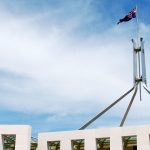Legislation re-defining marriage to include same sex couples passed its final third reading stage in the Commonwealth House of Representatives on December 7. The Marriage Amendment (Definition and Religious Freedoms) Act 2017 (No 129 of 2017) has now received the Royal Assent, and will commence operation on 9 December 2017.
The Attorney-General’s Department has a number of detailed fact sheets concerning new forms and other issues on their web-site.
What has changed?
To summarise briefly, the law of Australia will now allow marriage between “2 people” under the amended definition in s 5(1), in contrast to the previous definition, which referred to a union between “a man and a woman”. There will now be six categories of “authorised celebrant” (discussed in more detail below); those in two of those categories will be able to decline to solemnise a same-sex marriage on grounds which include religious grounds (but are not restricted to such grounds). One of those categories will be persons whose names appear on the Register of Marriage Celebrants and are identified under the new regime as “religious marriage celebrants”.
The law will also change to:
- recognise overseas same sex marriages, even those carried out prior to the change in Australia’s law, so long as the other provisions of Part VA of the Act dealing with overseas marriages are complied with (for these transitional provisions see Schedule 1, Part 5, item 70(2));
- establish a new category of “officers” to solemnise marriages of members of the Australian Defence Force overseas (while allowing existing defence force Chaplains to decline to solemnise same sex marriages);
- protect religious freedom of some participants in wedding ceremonies (discussed below in more detail);
- adjust references to married persons in some 20 other pieces of Commonwealth law.
For a more detailed explanation of the provisions of the Bill, see the official “Explanatory Memorandum“. A word of warning—those who consulted the “Smith Bill” before it was introduced into the Senate, should be aware that a large number of “technical” amendments were made to that Bill by the Attorney-General at an early stage of its passage through the Senate, and formed part of the Bill as finally approved. Most of these are indeed fairly uncontroversial (if the premise of same sex marriage is accepted), but one in particular is worth noting.
In Schedule 2 (which is not to commence for one year) section 40(5) of the Sex Discrimination Act 1984 (Cth) is to be repealed. That provision currently allows State and Territories to require that someone seeking to legally change their gender by re-issue of a birth certificate be unmarried. The removal of s 40(5) will arguably mean that in future a State or Territory applying such a rule could be sued for “marital status” discrimination under the Commonwealth SDA. This is not an amendment which seems to have been publicised in any way. It is justified in the Explanatory Memorandum by saying that the only reason such a rule would be in place would be to avoid a “same sex marriage” when such was not recognised in Australia. However, it seems to me that jurisdictions may have a range of legitimate reasons for the rule other than this, and it is fairly high-handed of the Commonwealth to threaten the bringing of discrimination actions to achieve policy change. Presumably the one-year commencement provision is to allow discussions to take place.
Types of Celebrants
There are currently four categories of persons authorised under the Marriage Act to solemnise legal marriages in Australia (“authorised celebrants”). They are
(1) ministers of religion of “recognised denominations”—Part IV, Div 1, Subdiv A of the Act;
(2) public servants who work at State and Territory Registry offices—Part IV, Div 1, Sub-Div B;
(3) persons appointed as “marriage celebrants” under Part IV, Div 1, Sub-Div C, who may be either “civil” celebrants, or such persons who are ministers of religion but not associated with the major “recognised denominations”. This final category will then include ministers of small, independent churches, for example.
(4) There is also one further category of authorised celebrant under the current law, chaplains of the Defence Force who under s 71 may solemnise marriages “between parties of whom one at least is a member of the Defence Force… in an overseas country”.
The new amendment will expand the list of authorised celebrants in two ways. First, there will now be another category of “domestic” celebrant, who will be registered under Subdiv D of Div 1 of Part IV, and called a “religious marriage celebrant”. Secondly, to allow same sex marriages to take places for the defence forces overseas, a new category of defence force celebrant will be introduced, an “officer” authorised by the Chief of the Defence Force under new s 71A.
Religious Freedom Protections
I previously commented that the religious freedom protections provided by the Smith Bill were inadequate, and I am still of that view. It is most unfortunate that, while the ALP allowed its members a conscience vote on support for the change overall, it seems to have not allowed them any option to support a number of amendments to increase religious freedom protections which were debated during the passage of the Bill through both Houses.
However, the following protections at least are provided by the Bill as passed:
- A minister of religion, under amended s 47, will be able to decline to solemnise a same sex marriage for specific “religious” reasons, and indeed it seems for any reason. (An identical protection will apply under amended s 81 to defence force chaplains.) My only continued concern about the way these provisions are worded is that they provides that “despite anything in this Part” the minister may refuse. It would have been preferable, in my view, for the protection to have been given “despite anything in any other law”. There is a possible argument that if some other law outside the Marriage Act would require the minister to solemnise a same sex wedding, he or she would have to do so. One example might the Tasmanian Anti-Discrimination Act 1998, which makes discrimination on the basis of “sexual orientation” unlawful under s 16(c), applies that in s 22 to “(c) provision of facilities, goods and services”, and contains no general religious defence. However, it seems obvious that the Commonwealth intends ministers of religion not to be penalised for declining to conduct same-sex weddings, however imprecisely the legislation is worded. There would be little point in adding s 47(3) and s 81(2) if that were not the case.
- A “religious marriage celebrant” will also be able to decline to solemnise a same-sex wedding, under new s 47A. There is an oddity about this which should be kept in mind. The definition of who can be regarded as “religious marriage celebrants”, under new s 39DA(b), means that in most cases they must be a “minister of religion”. If they are ministers of religion, then they will already be protected by s 47 noted above. They do not need to belong to a “recognised denomination”.
(Please note: as mentioned above, the Marriage Act already makes a distinction between a “minister of religion of a recognised denomination”, where s 26 allows a whole “denomination” to be proclaimed, and those who are ministers of religion while not belonging to a “s 26” denomination. The definition of “minister of religion” does not require that someone belong to a “recognised denomination”. See the definition in s 5(1), which has not been amended:
“minister of religion ” means:
(a) a person recognised by a religious body or a religious organisation as having authority to solemnise marriages in accordance with the rites or customs of the body or organisation; or
(b) in relation to a religious body or a religious organisation in respect of which paragraph (a) is not applicable, a person nominated by:
(i) the head, or the governing authority, in a State or Territory, of that body or organisation; or
(ii) such other person or authority acting on behalf of that body or organisation as is prescribed;
to be an authorised celebrant for the purposes of this Act.
To that extent it ought to be noted that the official Explanatory Memorandum, at para [45] on p 10, mis-states the terms of the definition. However, nothing seems to flow from the error.)
So does s 47A have any effect? Yes, because there is an unusual “grandfather” clause contained in new s 39DD(2) which allows those who are currently (i.e. before the amendment take effect) “marriage celebrants” but not ministers of religion, to be designated as “religious marriage celebrants”. This can occur where, as well as being currently registered:
(b) the person gives the Registrar notice that the person wishes to be identified as a religious marriage celebrant on the register:
(i) in writing; and
(ii) in a form approved by the Registrar; and
(iii) within 90 days after Part 1 of Schedule 1 to the Marriage Amendment (Definition and ReligiousFreedoms) Act 2017 commences; and
(c) the choice is based on the person’s religious beliefs.
This means that there will be a group of current civil celebrants who will have the right to decline to solemnise same-sex marriages.
What is slightly odd and not immediately apparent, is that the class of “religious marriage celebrants” referred to in Subdiv D will actually include all ministers of religion who are currently authorised as “marriage celebrants” under Subdiv C. That is because new s 39DD(1) requires the Registrar to automatically transfer all such persons to the Subdiv D category by designating them as “religious marriage celebrants”. The reason this is perhaps unexpected is that it will not be immediately apparent from consulting the list of celebrants whether a “religious marriage celebrant” does, or does not, object to solemnising same sex weddings. Awkward conversations may have to be held. It is also not clear whether a minister of religion who supports same sex marriage can easily apply to have their designation as a “religious marriage celebrant” removed, or not. If not, they will presumably need to make their views on the matter clear through some other means.
3. Finally, under new s 47B, there is a religious freedom protection made available toreligious bodies:
(1) A body established for religious purposes may refuse to make a facility available, or to provide goods or services, for the purposes of the solemnisation of a marriage, or for purposes reasonably incidental to the solemnisation of a marriage, if the refusal:
(a) conforms to the doctrines, tenets or beliefs of the religion of the body; or
(b) is necessary to avoid injury to the religious susceptibilities of adherents of that religion.
There is some lingering doubt as to how a court will interpret “body established for religious purposes”—it will obviously cover a church asked to hire out the parish hall, but will it cover a church school asked to hire out its assembly hall? It is to be hoped that in light of the loud claims by Parliamentarians of both sides that they support religious freedom, the term will be interpreted as broadly as possible.
Conclusion
There will no doubt be many more issues to canvass following this amendment. I have already made it clear that I don’t think it was a good idea. It is to be hoped that believers who now find themselves at odds with a fundamental shift in a major social institution will be allowed to continue to live out their faith in ways that glorify God and bless the community.
First published at https://lawandreligionaustrali…
Photo: Justin Knol, flickr














